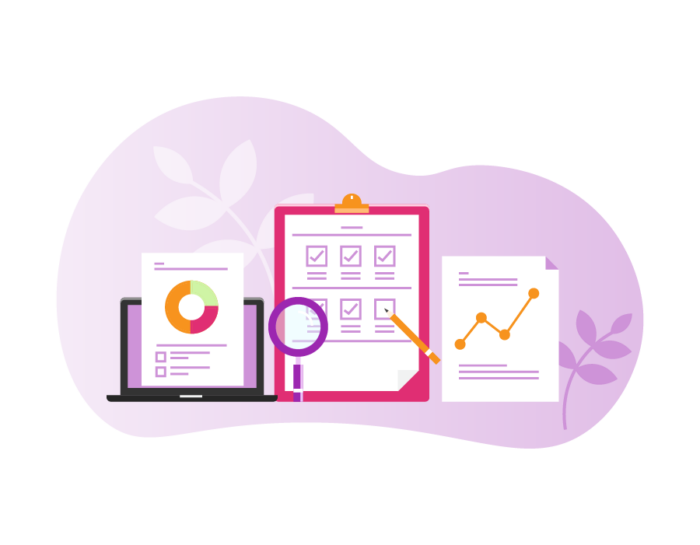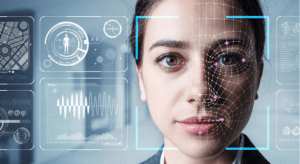5 the best methods of data collection

5 the best methods of data collection is very importance. Data is an integral part of our world, as we live in an age that is quick to give voice to various individuals or groups. Data usage cuts across different fields of operations and offers a broad range of applications.
Its exploration is vital in completing your thesis, dissertation, school projects, and more in academics. Through data collection, you can capture quality evidence, a prerequisite for making informed decisions and answering all questions posed. At the end of this article, you will understand the best data collection methods key to achieving your investigative objective.
Data collection
Data collection is the procedure of collecting, measuring, and analyzing accurate insights for research using standard validated techniques. Put simply, data collection is the process of gathering information for a specific purpose. It can be used to answer research questions, make informed business decisions, or improve products and services.
To collect data, we must first identify what information we need and how we will collect it. We can also evaluate a hypothesis based on collected data. In most cases, data collection is the primary and most important step for research. The approach to data collection is different for different fields of study, depending on the required information.
Primary data-collection methods
Some of the primary data-collection methods covered below are quantitative, dealing with countable data.
Others are qualitative :
- questionnaires,
- surveys
- documents,
- records are
- quantitative,
- interviews,
- observations,
- oral histories are qualitative

Understanding qualitative data collection
Qualitative data collection is gathering non-numerical information, such as words, images, and observations, to understand individuals’ attitudes, behaviors, beliefs, and motivations in a specific context. It is an approach used in qualitative research. Qualitative data collection looks at several factors to provide a depth of understanding to raw data. Qualitative data collection methods go beyond recording events to create context.
With this enhanced view, researchers can
- Describe the environment. Understanding where observations take place can add meaning to recorded numbers.
- Understand where observations take place
- It can add meaning to recorded numbers.
- Identify the people involved in the study.
- Describe the content of the study.
- Interact with study participants. Interactions between respondents and research staff can provide valuable information about the results.
- Interactions between respondents and research staff provide valuable information about the results.
- Be aware of external factors. Unanticipated events can affect research outcomes.
GENERAL CHARACTERISTICS
The techniques that we will see below to obtain the required information:
- Primary:
- Secondary
SAMPLING The sampling process involves the use of a small number of items or parts of the population to draw conclusions about the entire population. A sample is a subset or just a part of a large population.
SAMPLING
The sampling process involves using a small number of elements or parts of the population to draw conclusions about the entire population. The purpose of sampling is to allow us to estimate some unknown characteristics of the population, applying the sample through interviews, experiments, surveys, observation, on observed and analyzed groups (focus group).
The first problem in sampling is defining the target population. Incorrect or vague definition of this population produces wrong results. The sampling unit is a single element or group or elements subject to selection in the sample. There are several alternative ways to select a sample.
The main alternative sampling plans are classified into two groups:
Probabilistic techniques and non-probabilistic techniques.
The simple random sample, in which each member of the population has an equal probability of being selected, is the best-known form of probability. In non-probability sampling, the probability that any member of the population will be chosen is unknown. The most common criteria relate to accuracy requirements, available resources, time constraints, knowledge availability, and analytical requirements.
- precision requirements,
- The available resources,
- time limitations,
- The availability of knowledge
- The analytical requirements.
Documentation Techniques Chapter 5:
The first problem in sampling is defining the target population. Incorrect or vague definition of this population produces wrong results. The sampling unit is a single element or group or elements subject to selection in the sample. There are several alternative ways to select a sample. The main alternative sampling plans are classified into two groups:
THE SURVEY
THE NATURE OF SURVEYS
Surveys, like interviews, collect data through mail, telephone, or person-to-person. The more formal term, sample survey, highlights that the purpose of establishing contact with respondents is to obtain a representative sample of the target population.
SURVEY OBJECTIVES:
Identifying the characteristics of target markets, measuring consumer attitudes, and describing consumer purchasing patterns are common objectives of surveys.
LHE SURVEY AND THE USE OF QUESTIONNAIRES
TYPES OF INFORMATION SEEKED
1. They allow you to collect:
- opinions,
- positions,
- behaviors
- characteristics of the different key people in the company
2. Attitude is the desire that people have.
3. Opinion is what you really think.
4. Behavior is what members of the organization do.
5. Characteristics are the attributes of people or objects.
6. Questionnaires can use open and closed questions.
7. Through questionnaires the researcher can quantify the results of the surveys and/or interviews.
8. There is a great similarity between questionnaires and interviews.
5 Data Collection Methods
- surveys
- questionnaires
- Focus group interviews
- direct observations.
- Documents and records (and other secondary data types, which will not be our main focus here)
1. Closed-ended Surveys and Online Quizzes
Closed-ended surveys and online quizzes are based on questions that give respondents predefined answer options to opt for. There are two main types of closed-ended surveys – those based on categorical and those based on interval/ratio questions. To learn more, we have prepared a guide on different types of closed-ended survey questions.
2. Open-Ended Surveys and Questionnaires
Here’s an example that best illustrates the difference:

You need to carefully determine the optimal number of questions, as answering open-ended questions can be time-consuming and demanding, and you don’t want to overwhelm your respondents.
3. 1-on-1 Interviews
One-on-one (or face-to-face) interviews are one of the most common types of data collection methods in qualitative research. Here, the interviewer collects data directly from the interviewee.
4. Focus groups

A focus group is a research technique used to collect data through group interaction. The group comprises a small number of carefully selected people who discuss a given topic. Focus groups are used to identify and explore how people think and behave, and they throw light on why, what and how questions.
5. Direct observation
Direct observation is the collection of information using your senses. By observing, you can document activities, behavior, and physical aspects of a situation without having to depend on peoples’ willingness or ability to respond accurately to questions. Direct observation is one of the most passive qualitative data collection methods.
The impact of artificial intelligent on the protection of personal data
As the Norwegian Personal Data Protection Agency points out, most AI applications require large volumes of data to learn and make intelligent decisions. Now, it is worth asking what are the scenarios in which AI can generate a risk for the owner of personal data. In this regard, article 28 of the Personal Data Protection Law establishes the obligations of those responsible and in charge of processing.
AI and Privacy Rights
The rise of AI has drastically affected privacy rights. AI has enabled organizations to collect, store, and process massive amounts of data at unprecedented rates. The use of AI algorithms to process data has led to the emergence of new privacy concerns. One of the primary privacy concerns regarding AI is AI’s potential to impact an individual’s right to privacy.
AI has the ability to infer information from data that can be used to identify an individual or group, including sensitive information such as medical records, sexual orientation, and religious beliefs. The use of AI for predictive analytics is an area where privacy rights can be compromised. The emergence of facial recognition technology, used for surveillance and tracking, has raised questions about privacy and the use of AI in these applications.
Furthermore, the lack of transparency in the use of AI algorithms and the lack of explainability have made it difficult for individuals to understand how their data is being used by organizations. This lack of clarity in AI algorithms has led to concerns that individuals may be denied opportunities based on decisions made by AI tools that can’t be explained.
Digital privacy concerns
Digital privacy concerns revolve around the collection, storage, and processing of digital data, which can be linked to an individual. With the rise of the internet and social media, digital privacy has become a significant concern. The use of AI in processing vast amounts of data has further complicated digital privacy concerns.
The collection of personal data through social media platforms, search engines, and online marketplaces has created a treasure trove of data that can be used for commercial or political purposes. The use of AI algorithms to process this data has raised concerns about how this data is being used, who has access to it, and how its misuse could impact individuals’ privacy.
The use of AI in advertising, personalization, and recommendation systems also poses data privacy risks. The algorithms used in these applications collect vast amounts of user data, which is then used to target users with specific products or content. This targeting is based on an individual’s online behavior, indicating interests, browsing habits, and other personal preferences, further highlighting the impact of AI on privacy and data protection laws.


 Afrikaans
Afrikaans Albanian
Albanian Amharic
Amharic Arabic
Arabic Armenian
Armenian Azerbaijani
Azerbaijani Basque
Basque Belarusian
Belarusian Bengali
Bengali Bosnian
Bosnian Bulgarian
Bulgarian Catalan
Catalan Cebuano
Cebuano Chichewa
Chichewa Chinese (Simplified)
Chinese (Simplified) Chinese (Traditional)
Chinese (Traditional) Corsican
Corsican Croatian
Croatian Czech
Czech Danish
Danish Dutch
Dutch English
English Esperanto
Esperanto Estonian
Estonian Filipino
Filipino Finnish
Finnish French
French Frisian
Frisian Galician
Galician Georgian
Georgian German
German Greek
Greek Gujarati
Gujarati Haitian Creole
Haitian Creole Hausa
Hausa Hawaiian
Hawaiian Hebrew
Hebrew Hindi
Hindi Hmong
Hmong Hungarian
Hungarian Icelandic
Icelandic Igbo
Igbo Indonesian
Indonesian Irish
Irish Italian
Italian Japanese
Japanese Javanese
Javanese Kannada
Kannada Kazakh
Kazakh Khmer
Khmer Korean
Korean Kurdish (Kurmanji)
Kurdish (Kurmanji) Kyrgyz
Kyrgyz Lao
Lao Latin
Latin Latvian
Latvian Lithuanian
Lithuanian Luxembourgish
Luxembourgish Macedonian
Macedonian Malagasy
Malagasy Malay
Malay Malayalam
Malayalam Maltese
Maltese Maori
Maori Marathi
Marathi Mongolian
Mongolian Myanmar (Burmese)
Myanmar (Burmese) Nepali
Nepali Norwegian
Norwegian Pashto
Pashto Persian
Persian Portuguese
Portuguese Punjabi
Punjabi Romanian
Romanian Russian
Russian Polish
Polish Samoan
Samoan Scottish Gaelic
Scottish Gaelic Serbian
Serbian Sesotho
Sesotho Shona
Shona Sindhi
Sindhi Sinhala
Sinhala Slovak
Slovak Slovenian
Slovenian Somali
Somali Spanish
Spanish Sundanese
Sundanese Swahili
Swahili Swedish
Swedish Tamil
Tamil Tajik
Tajik Telugu
Telugu Turkish
Turkish Ukrainian
Ukrainian Urdu
Urdu Uzbek
Uzbek Thai
Thai Vietnamese
Vietnamese Welsh
Welsh Xhosa
Xhosa Yiddish
Yiddish Yoruba
Yoruba Zulu
Zulu